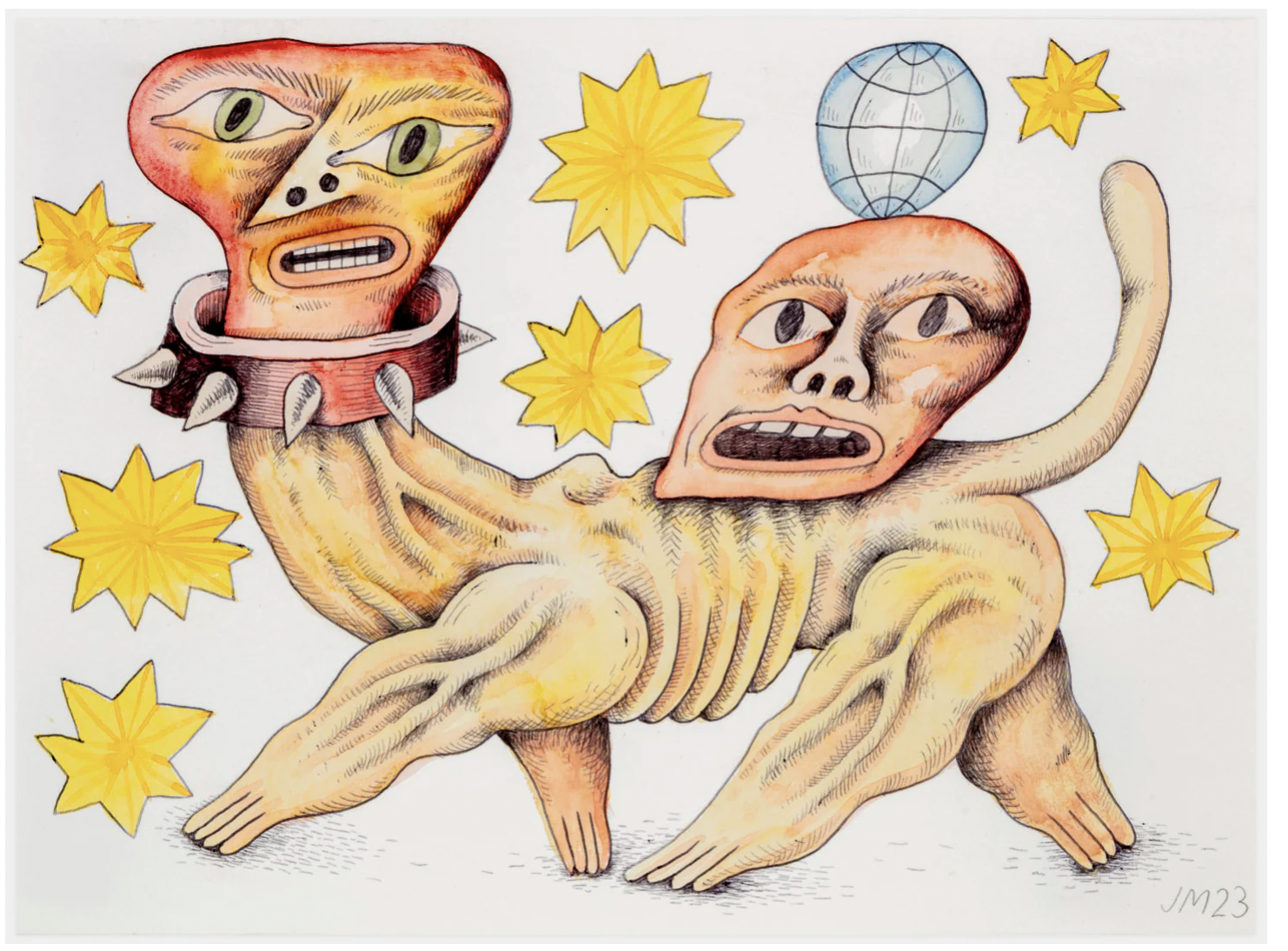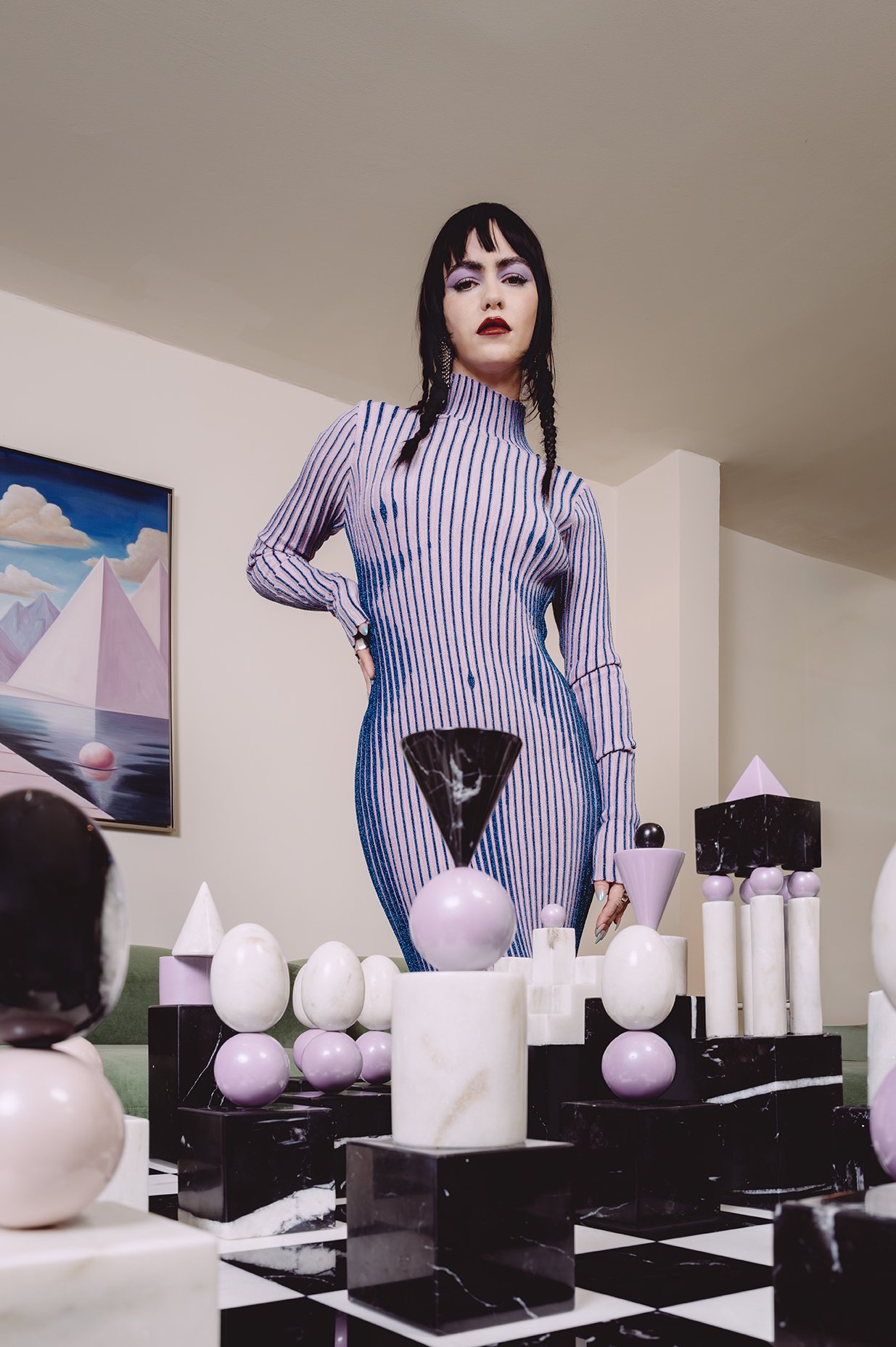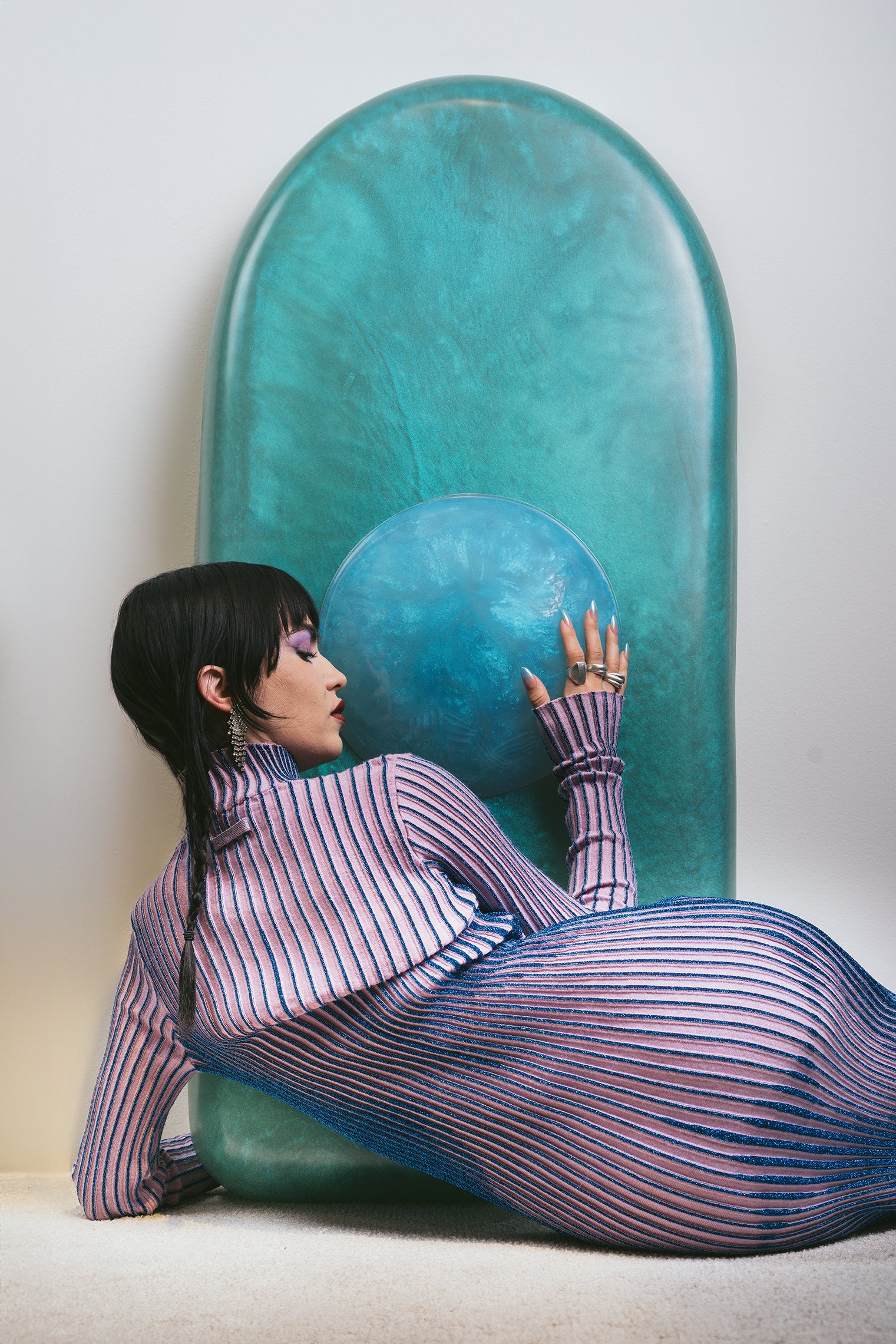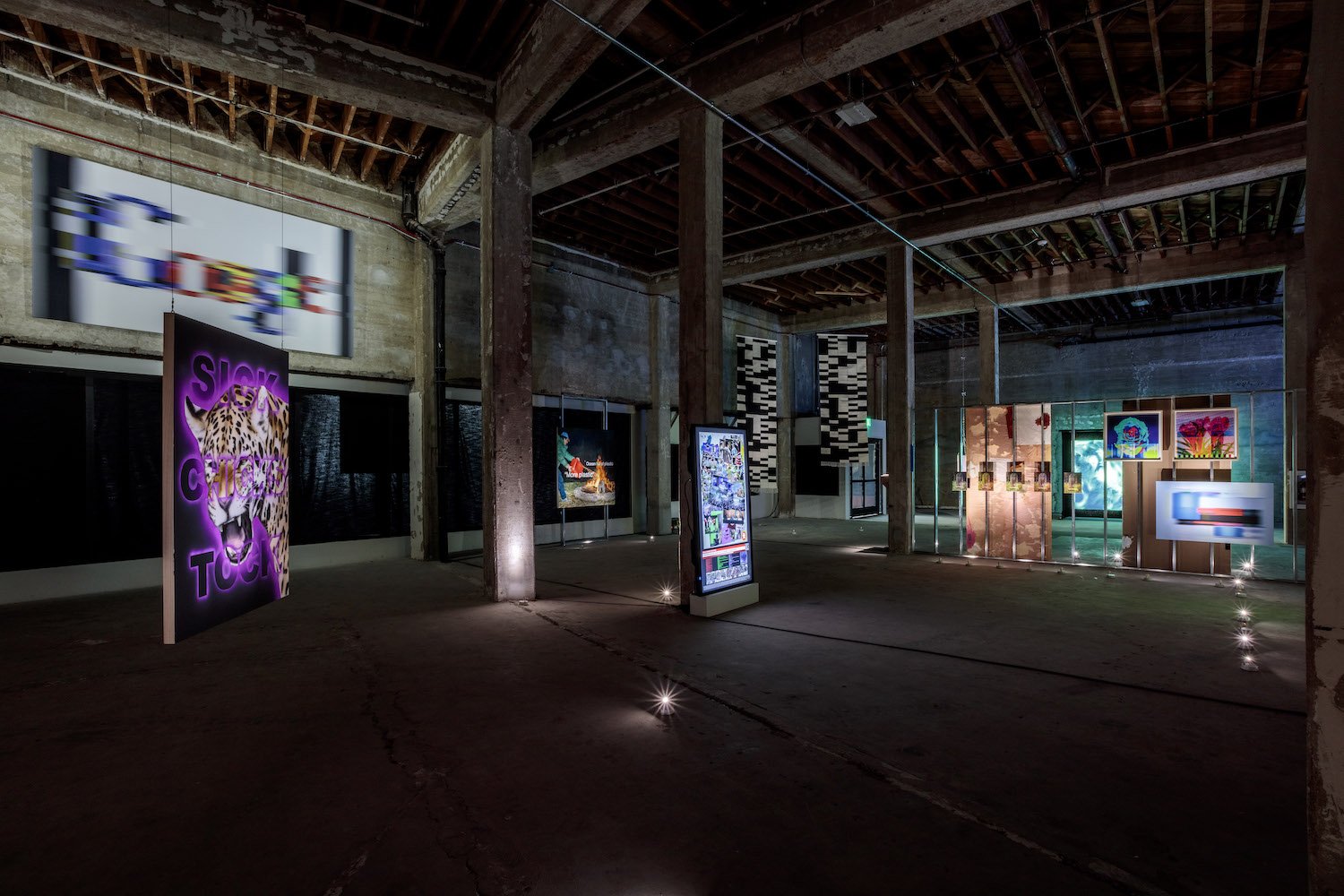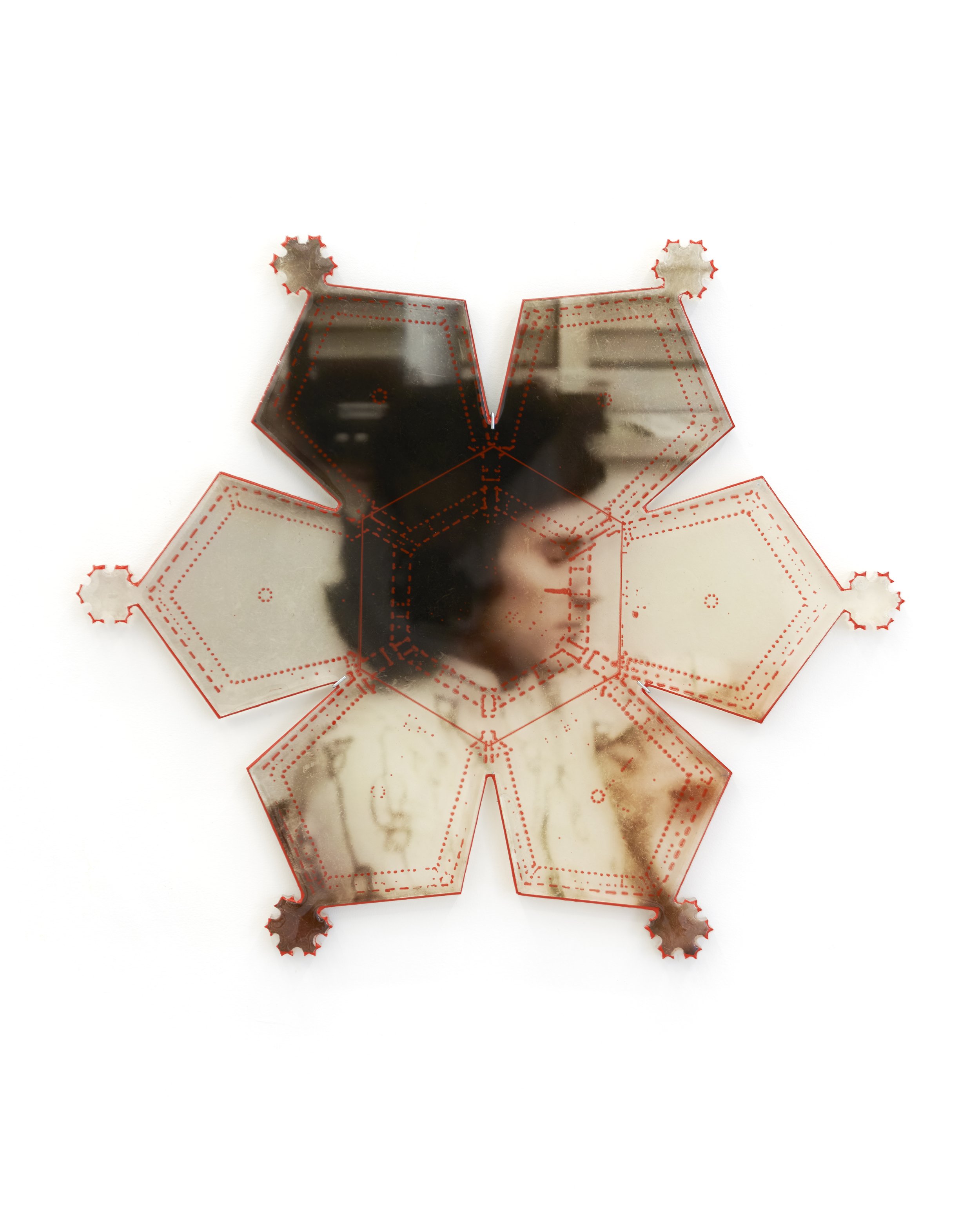Holly Hendry, Her bones begin to bend, 2024. Image courtesy of SCAD.
Holly Hendry’s Watermarks, featured at the Savannah College of Art and Design (SCAD) Museum of Art through June 24, is a site-specific oasis which playfully investigates the way water runs through virtually every facet of human life. Situated outside the museum in glass vitrines overlooking Turner Boulevard, Hendry’s four sculptural pieces encounter the world in an unconventional way. The architectural display is situated in the community; students pass it every morning on their way to class. The significance behind the work in this context becomes ever-evolving, effortlessly aligning with the shifting elements of the everyday. Her edifices traverse intricate concepts that range from the expansiveness of architecture, societal conceptions of the female form, to the connectivity of bodies via water. Interestingly balancing the lightness of uplifting artistic figuration with the weight of impending doom as it relates to our not-at-all-ubiquitous freshwater supply, Hendry’s sculptural forms are dynamic manifestations of life on earth.
Watermarks is organized by SCAD Museum of Art chief curator Daniel S. Palmer with assistant curator Haley Clouser and presented as part of SCAD deFINE ART 2024.
Mia Milosevic: I wanted to start off with just talking about your show here at SCAD. Can you walk me through the origins of Watermarks, like how you got your inspiration for this show?
Holly Hendry: I think my work always starts with building a site or space. It was an exciting moment of thinking about that in the context of the jewel box [glass vitrines on SCAD Museum of Art’s facade] with it being this unique site that interfaces public space and gallery space. That became the starting point of it all before even visiting the space. I was excited about how that could actually act as a point of intersection in a similar way to a diorama—a slice through something. I was interested in that idea of confrontation. The building is almost pushing itself outwards, but has a view inwards at the same time. The work is pushing itself out at you, and so then the glass becomes this moment of intimacy between the two things.
MM: In all four works you have on display, they’re all different in their own way but you can feel the way the earth’s elements are fused into each of them.
HH: I spent a while reading and looking at the history of industry along the river and more widely about the role of a port in terms of how a town or city works, and that in relation to bodily systems, plumbing systems, sewage systems, gut systems… I look at industry from the industrial revolution to systems of how we live today. I try to look through a critical lens, but also through something physical and bodily where things aren't so packed away and hidden–they reveal themselves.
MM: It does feel like a lot of your work, and I'm referencing your previous work too, focuses on the machinery or “behind-the-scenes” of things.
HH: I think machinery poses quite an interesting challenge for me because it's something so far from felt and organic, same with architecture. I'm trying to pull those things in. I try to pull them into a space where they can be something else.
MM: The idea of water is really interesting in your work here. Especially considering the exhibit’s site-specificity, at Port Savannah. Can you tell me more about how water plays a role in this?
HH: I think water has become, no pun intended, an underlying current in a lot of my practice recently. It’s been really present in the thinking for this work because of Savannah itself. I was fascinated by that fluidity of solid ground, the marshes in Savannah which go underwater sometimes. There's not many places where you have that kind of palpable engagement with something. Savannah being a city that’s shaped by tides and river current was something that I found really interesting from the offset. It was another way to think about bodies and materials in relation to water. It’s about us being beyond these closed-off units, which I found really exciting in relation to the jewel boxes because they are these closed-off units you can see through and into.
There’s the idea of responsibility through something like water where you can think of it as holding a history of bodies and how they've been treated. I think you can't get away from thinking about that in a city like Savannah regarding moments in history that are really painful, like The Weeping Time, which is also about water: tears, the mistreatment of bodies and people. Water became something that was not just about excess or spill, but also about raindrops and teardrops–these things that do connect bodies, really.
Image courtesy of the artist and SCAD.
MM: One of your works in the show resembles an ear, which forces you to think about the body very directly.
HH: I wanted it to be a kind of illogical form of the body as well, where it could be guttering or it could be an ear, or it could be something that references the ear canal. There’s a play of words as well, since the inside of an ear is called a labyrinth. So there's ideas of networks and tunnels within that, but then an ear canal is a reference to water and river systems. I was excited about moments of interplay between those elements.
MM: There’s a poem that's inspiration for the work, the story of the water nymph Cyane by Ovid.
HH: I never really used something so poetic or with such direct reference to myth within my work before, but it felt really important to ground this show in something that is watery, body-mingling, elastic and centering on a female body. The very first line that you come across describes how her limbs soften, her bones begin to bend. And it references a female figure. I found that quite interesting to be so direct with that initially. It feels like this poetry is almost rubbing two different art forms together.
MM: I feel like the idea of flatness comes up a lot in your work, especially referencing Slacker (2019) which features the sculptural synthetic skin you made.
HH: That work was shown at Yorkshire Sculpture Park and uses the structure of industrial machinery to try and bring it to bring something else. It started from something very physical because I was grinding up plastic objects to then turn flat and make into this silicon tapestry that became a band, which I then rotated around motors. I think this idea of the exquisite corpse and that game of consequences, as some people call it, implies the surrealist idea of chance and moment. It relates a lot to flatness as well. I'm quite interested and excited by that in an architectural sense. You see it in some cities where there's a building that maybe you'd expect to see, and then a kind of intersection of something completely random that throws you into a different interpretation–it becomes a Frankenstein building. It felt like I was doing that with the architecture in Watermarks, through the regularity of brick works interspersed with these moments of color.
MM: The idea of your work being surrealist sculpture is interesting. The contrast of putting something real into something fake like machinery seems to expose it more.
HH: I think that element is present in the technique of cartoon notification that I try to use. It's like one single line that is trying to express something related to movement or character, which cartoons are so good at. They make one simple movement really embody that movement through just line and color. My work has those ambitions as well, in a way.
MM: Do you draw a lot of inspiration from cartoons?
HH: I think it's more like a cartoon sensibility. There's moments that I'd reference from like Looney Tunes or Popeye, where there's an elasticity to it. Like in films where you see cartoons aligned with human bodies, but the malleability becomes so extreme and then the human body seems so vulnerable in comparison. There's a lightness to dark subject matter or difficult subject matter that I think cartoons deal with really well. I try to do that within my work as well.
MM: Do you feel like there's dark subject matter in this show?
HH: I don't know if it goes as far as dark subject matter, but I think I'm always dealing with elements of divergent bodily moments. Depending on how you read the work, that could be quite extreme or not, so I think it's always there. There's always ideas of human fragility or death or pain that are very closely tied with humor or awkwardness. It's quite a difficult thing for me to unpick verbally because that's what I feel the purpose of the work is to do physically. And if I could explain it, I would (laughs).
Image courtesy of the artist and SCAD.




